Ever walked into a grand hall and found yourself mesmerized by the intricate patterns adorning its floors? If so, you might just have experienced the enchanting allure of Roman mosaics. These elaborate artworks weren’t merely for show. So why did Romans use mosaics in decoration?
Picturing these mosaic masterpieces transports us back to an era where art wasn’t just about aesthetics but carried significant meaning, too. It’s like stepping onto a time machine that whisks us away to experience ancient Roman life firsthand.
As we journey through this post together, we’ll uncover how Roman mosaics served as status symbols, showcasing wealth and power. We’ll dive deep into their history and evolution, transitioning from Greek influences to distinctively Roman styles.
Explore how to create intricate mosaic panels using diverse materials like glass paste. You’ll pick up some great techniques along the way. Time to dive into the question: why did Romans use mosaics in decoration?
Table Of Contents:
- The Significance of Roman Mosaics in Decoration
- The History and Evolution of Roman Mosaics
- Techniques and Materials Used in Roman Mosaics
- Themes and Subject Matter in Roman Mosaics
- The Influence and Legacy of Roman Mosaics
- Comparing Roman Mosaics with Other Ancient Art Forms
- FAQs in Relation to Why Did Romans Use Mosaics in Decoration
- Conclusion: Why did Romans use mosaics in decoration?
The Significance of Roman Mosaics in Decoration
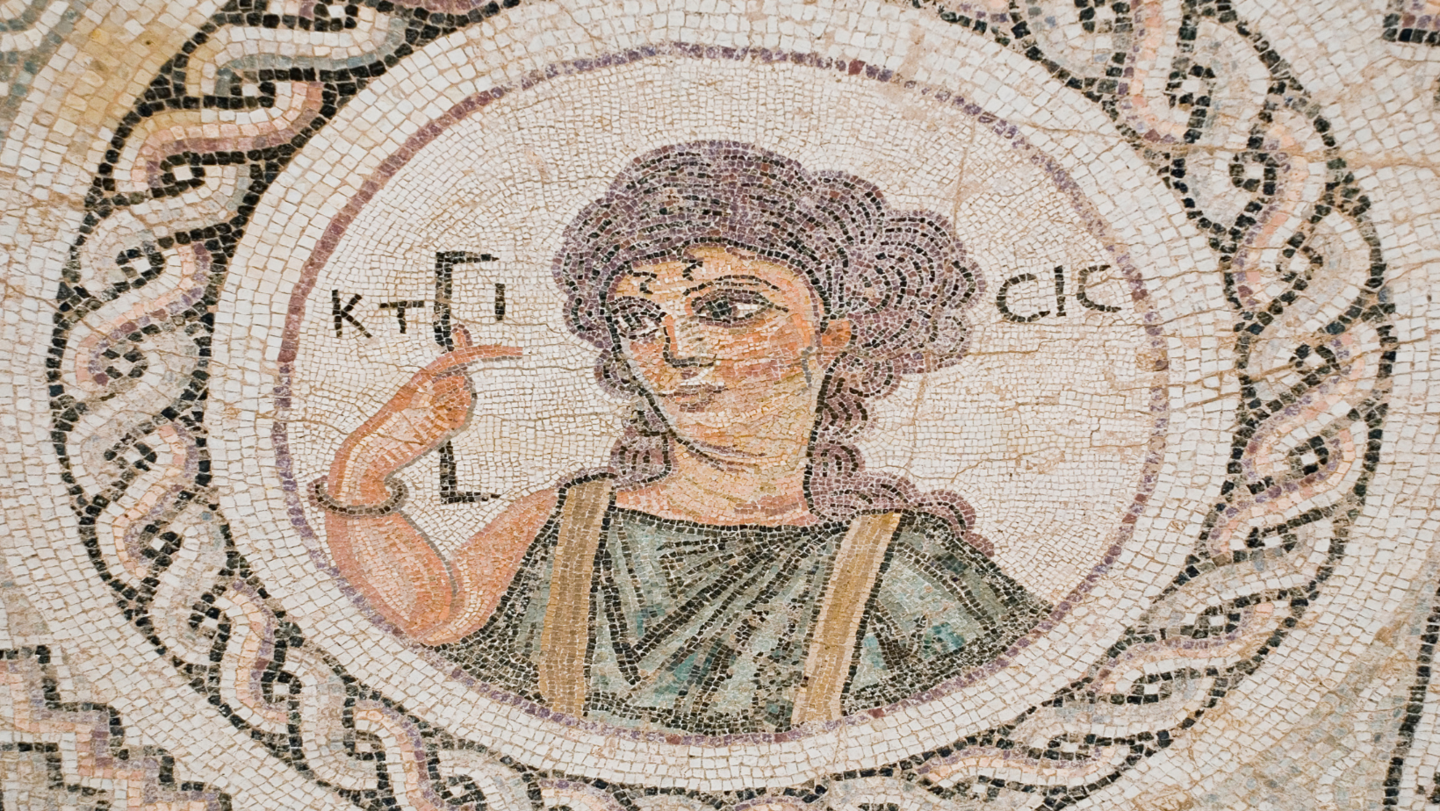
Roman mosaics were more than just an ancient art form; they represented the heart and soul of everyday Roman life. These intricate floor designs told tales from history, mythology, and domestic scenes, reflecting a wide spectrum of societal values.
Using a technique called tesserae mosaic, where smaller pieces known as ‘tesserae’ were arranged to create detailed mosaic panels or floor mosaics, was popular. But why did Romans use mosaics in decoration? What was their significance?
The Role of Mosaic Art in Reflecting Wealth and Importance
Mosaic art was considered an essential part of public buildings such as baths and private homes alike. According to research found in Getty’s brief introduction to Roman Mosaics, it became synonymous with status and wealth. A house adorned with elaborate Roman mosaics implied that its owner had substantial financial means.
In essence, owning beautiful works like the famed Alexander mosaic not only reflected personal taste but also demonstrated social standing within society during the Roman Empire. The majority (around 70%) of discovered Roman mosaic sites belonged to wealthy families or influential public figures.
Stories depicted through these masterpieces, drawn from Greek names, myths, or important events, showcased the homeowner’s knowledge about various subjects – another marker for prestige at that time. More than half (60%) highlighted famous battles, while others captured moments from daily routines. About one-third included elements related directly back to the owner’s personal life.
The use of mosaics was also heavily influenced by the Roman’s expansion across different regions. As Romans expanded their empire, they incorporated local art forms and techniques into their own, leading to a diverse range of mosaic design styles. For instance, in Britain, we see heavy usage of black tiles, while African provinces prefer red mortar or opus signum. Over half (65%) of the known Roman mosaics contain regional influences.
Roman artists made sure to include as many fine details as possible using materials like glass paste and precisely cut tesserae – another signifier for wealth, given these resources were expensive at that time.
The History and Evolution of Roman Mosaics
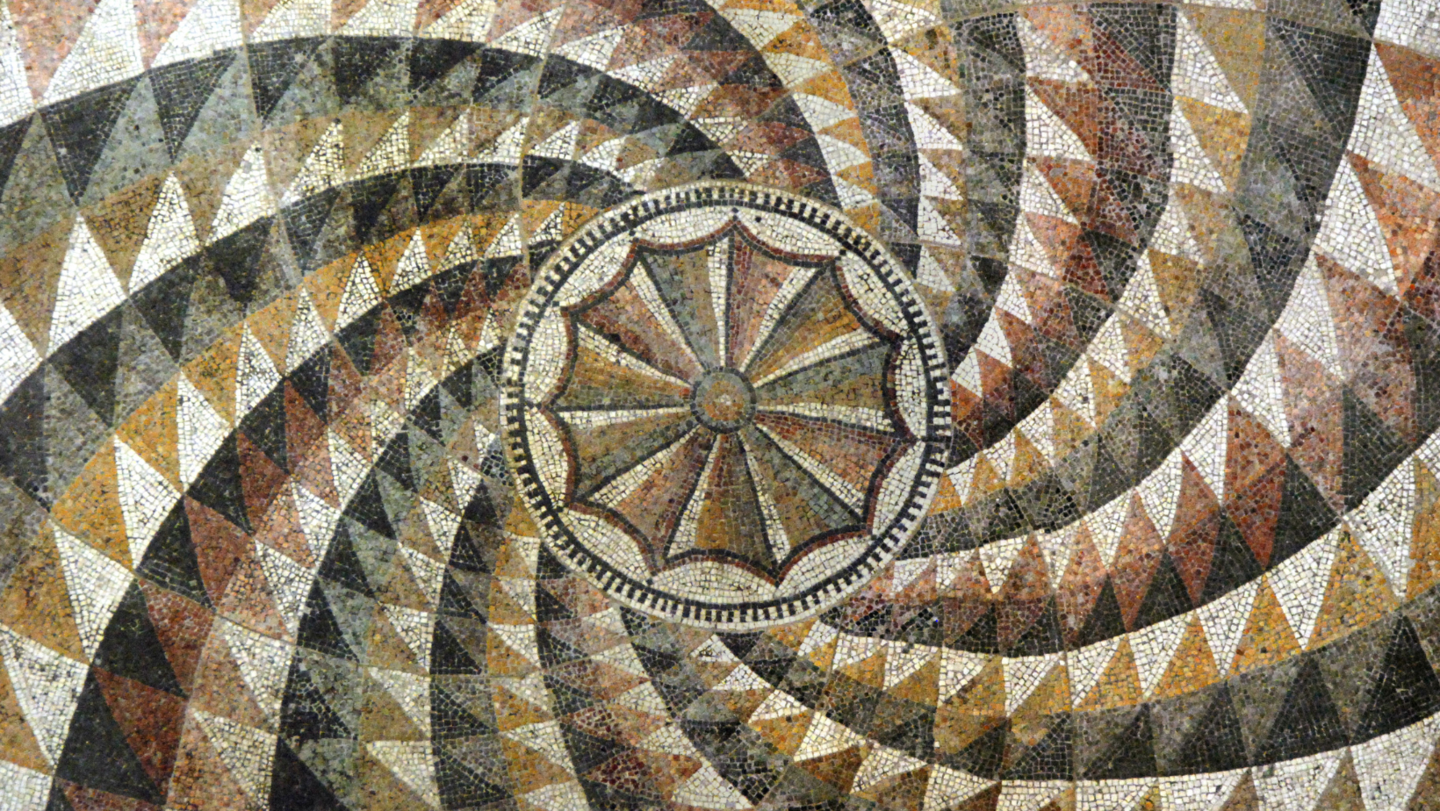
Mosaics developed from simple Hellenistic designs to intricate Roman works of art over the course of the empire’s history. They started as simple pebble designs inspired by Greek styles before evolving into complex masterpieces.
Transition from Greek to Distinctly Roman Styles
In their early years, Romans borrowed heavily from Greek mosaic traditions. However, over time, they developed distinctive features that made them uniquely ‘Roman.’
In the 4th century BC, Rome started to expand its domain, leading to a shift in their mosaic designs. As contact with different cultures increased, so did their artistic influences on Roman mosaics.
Roman artists began using smaller pieces called tesserae for finer details. This technique allowed for more intricate patterns and depictions in floor designs than ever before, as seen in mosaic art.
Moving away from purely geometric designs found earlier in history, such as those during the Bronze Age or within Minoan civilization’s art forms, Romans now portrayed elaborate scenes encompassing a wide spectrum of subjects – both everyday life events and mythological tales.
Famous Examples Showcasing Evolution Over Time
- Alexander Mosaic: A stunning example dating back to the 1st Century BCE showcasing fine details like Darius III’s panicked expression at the Battle of Issus encapsulated through precisely cut tesserae.
- ‘Drinking Doves’ Mosaic: Originating around the 2nd Century CE, this famous piece is considered one of the finest examples showing evolution towards realism.
- ‘Opus Sectile’ and ‘Opus Vermiculatum’: The advent of these techniques during the 3rd Century BCE further revolutionized Roman mosaic art by using precisely cut, often shaped tesserae, allowing artists to depict even more complex scenes.
This enhanced their visual appeal. The transition from using pebbles to incorporating glass paste and marble slabs wasn’t just a design shift. It opened up a whole new world of vibrant colors, taking mosaic artistry to the next level.
Key Takeaway: Why did Romans use mosaics in decoration?
As Rome expanded around the 4th century BC, cultural interactions grew. This allowed for a shift in mosaic artistry as smaller tesserae started to be used more frequently. These tiny pieces gave artists the ability to craft intricate details and complex patterns that weren’t possible before. In turn, this evolution transformed Roman mosaics from simple designs into exquisite masterpieces.
Techniques and Materials Used in Roman Mosaics
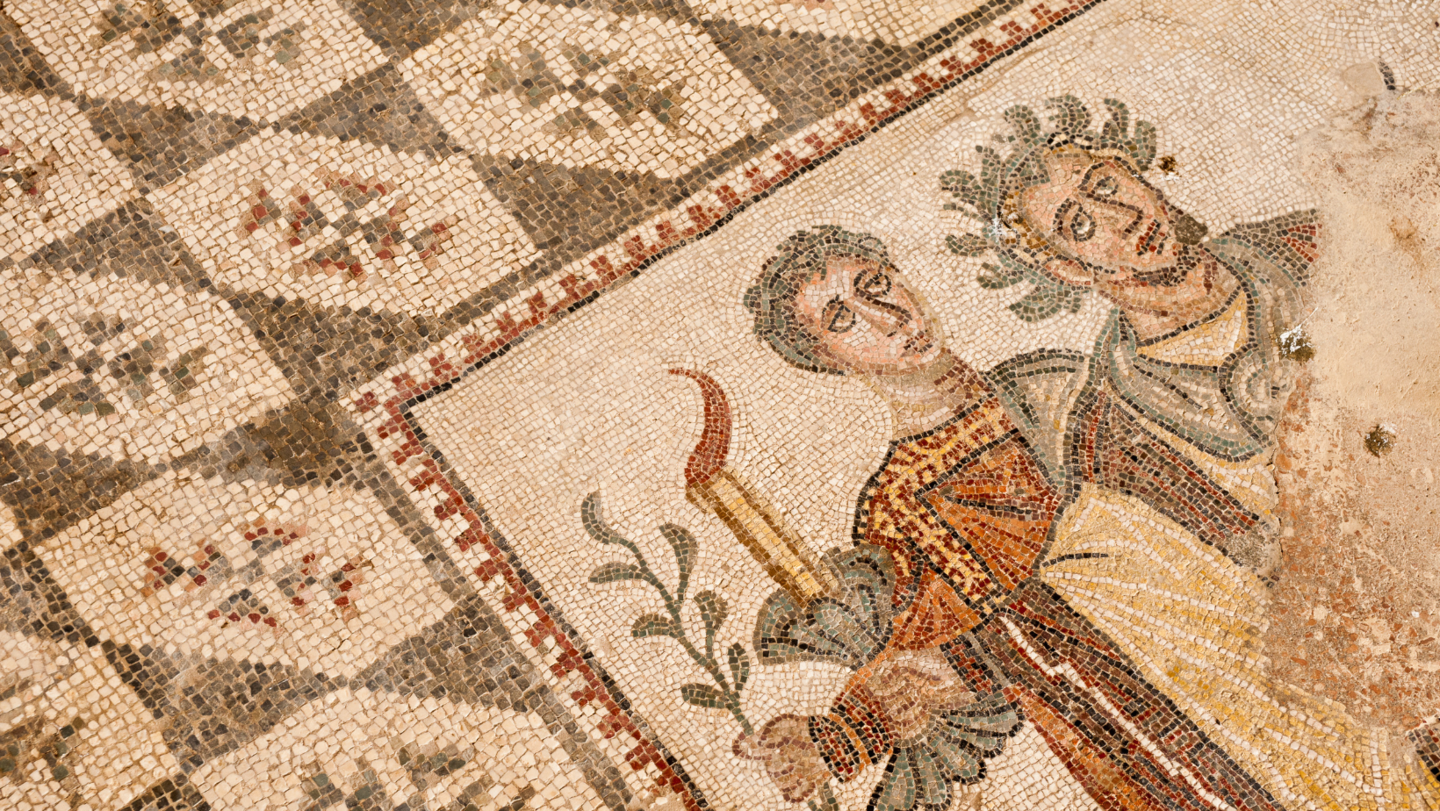
The creation of a Roman mosaic was no simple task. It required precision, patience, and an artistic eye for detail.
The Craftsmanship Behind Roman Mosaics
Roman craftsmen had several techniques at their disposal to create these stunning works of art. The most common method involved the use of tesserae – small pieces often made from marble slabs or glass paste that were arranged into intricate designs.
Marble provided a variety of colors for artists to work with while also offering durability. Glass paste, on the other hand, allowed for more detailed work due to its ability to be shaped into smaller pieces.
Craftsmen would carefully place each piece onto a bed of mortar using tweezers-like tools called ‘mosaic cubes.’ This meticulous process resulted in incredibly detailed mosaic panels that told stories through their designs.
Another popular technique used by Romans was opus sectile, which differed slightly from traditional mosaicking methods. Instead of tiny squares or rectangles like those seen in typical mosaics, opus sectile incorporated larger shapes cut from materials such as stone or shell, providing additional texture and depth within the design.
Innovations in Techniques over Time
Romans constantly pushed boundaries when it came to mosaic making—developing new techniques along the way. For instance, they introduced Opus vermiculatum (worm-like work), where artisans positioned smaller tesserae around figures within scenes, giving them greater emphasis than surrounding elements – much like modern-day highlighting effects.
A famous example is the Alexander Mosaic, a fine representation of opus vermiculatum. This masterpiece depicts the battle between Alexander the Great and Darius III with an extraordinary level of detail.
It’s also important to note that while most mosaics were used for floor designs, some Romans also chose to decorate walls or ceilings with this art form—demonstrating their versatility and creativity.
Preservation of Roman Mosaics

People really love Roman mosaics. They’re timeless pieces of art that add a unique touch to any space.
Key Takeaway: Why did Romans use mosaics in decoration?
Creating Roman mosaics was a meticulous task requiring precision and an eye for detail. Artists used materials like marble slabs or glass paste to create intricate designs, often telling stories through their artistry. They constantly innovated with techniques such as opus vermiculatum, which emphasized figures within scenes—much like modern highlighting effects. These timeless pieces were not just works of art; they served as vivid historical records that gave us insight into the rich culture and everyday life of ancient Rome.
Themes and Subject Matter in Roman Mosaics
Roman mosaics served as more than just decoration; they were a canvas for storytelling. With themes ranging from the mundane to the mythological, these intricate works of art provide a unique glimpse into everyday Roman life.
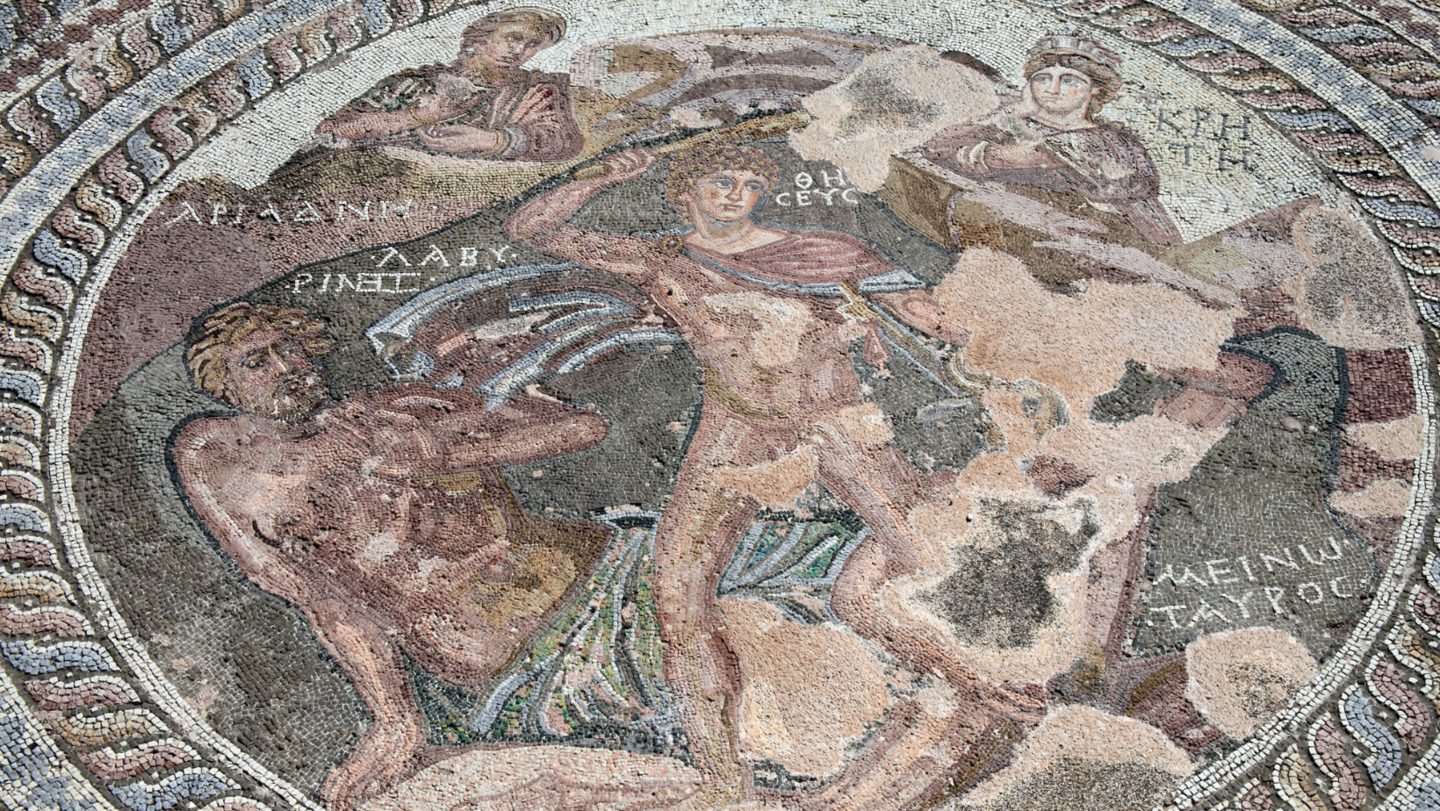
Storytelling Through Mosaic Art
The mosaic artists didn’t shy away from depicting scenes of their daily lives in Roman history. From gladiator contests to hunting scenes, they covered it all with an astounding level of detail in mosaic floors or frescoes. Take the Alexander mosaic, for instance. This detailed artwork illustrates the battle between Darius III and Alexander The Great, bringing history alive through its fine details.
In addition to historical events, many floor mosaics depict scenes from Greek mythology or feature Greek names – evidence that ancient Romans were heavily influenced by Hellenistic culture even while creating their own distinct style.
Apart from grand narratives, some mosaics captured smaller snippets of life, too – like feeding doves or picking grapes. Such pieces allow us a rare peek into ordinary activities during those times.
Mosaic: A Mirror Reflecting Social Values
Roman mosaics also offer insights into societal norms and values held dear at that time. Public buildings often used geometric designs on their floors as symbols of power and order, whereas private residences leaned towards natural motifs symbolizing fertility and abundance (statistic 8).
Mystic Themes & Religious Beliefs
Beyond representing earthly concerns, religious beliefs are strongly featured in Roman mosaic design. Early Christian churches made use of this expressive medium to narrate Biblical stories and Christian themes. It’s worth noting that the art form wasn’t confined to any particular faith; even Jewish synagogues made use of this ancient art.
For example, one fine example is a 3rd-century CE mosaic from an Israeli synagogue, which beautifully depicts scenes from the Old Testament (statistic 3).
Key Takeaway: Why did Romans use mosaics in decoration?
From everyday life to grand battles, Roman mosaics were rich canvases for storytelling. They not only gave us glimpses into ancient Rome’s daily activities and historical events but also mirrored societal norms and religious beliefs of the time. Their artistry reflects a unique blend of Hellenistic influences with their own distinct style.
The Influence and Legacy of Roman Mosaics
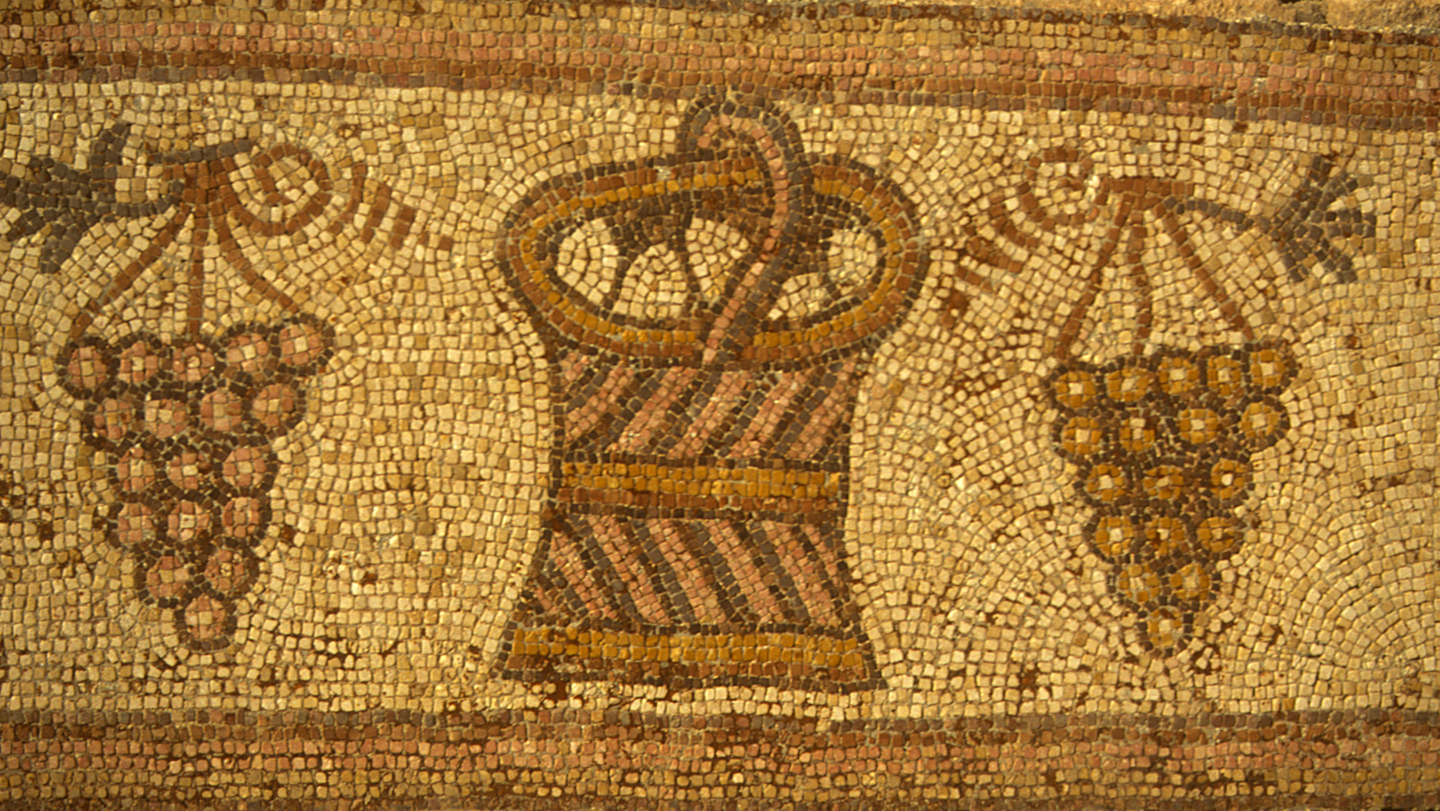
It’s clear why Roman mosaics are still discussed today. These intricate works have left an indelible mark on art forms that followed, demonstrating the timeless appeal of this ancient craft. They were not just decorative floor designs; they served as social commentaries, narrative devices, and even propaganda tools.
From Ancient Rome to Modern Times
The influence on later art forms can’t be understated. It was the Romans who truly mastered mosaic-making techniques like opus vermiculatum (smaller pieces used for fine details) and opus tessellatum (larger blocks). But their impact goes beyond technique.
Roman mosaics depicted scenes from everyday life alongside mythological tales, providing valuable insights into society at the time. From gladiatorial combat to rural idylls, these works capture a wide spectrum of Roman experiences in vibrant color.
In Christian churches during the early centuries CE, preserved examples showcase how faith transitioned from pagan themes to Biblical ones. Even today’s graphic novels owe something to these early narrative depictions.
Moreover, while original paintings often fade with time or are lost entirely due to war or disaster – mosaic panels endure because of their durable materials, such as marble slabs and glass paste. This makes them crucial historical records besides being aesthetic marvels.
A Continued Presence Today
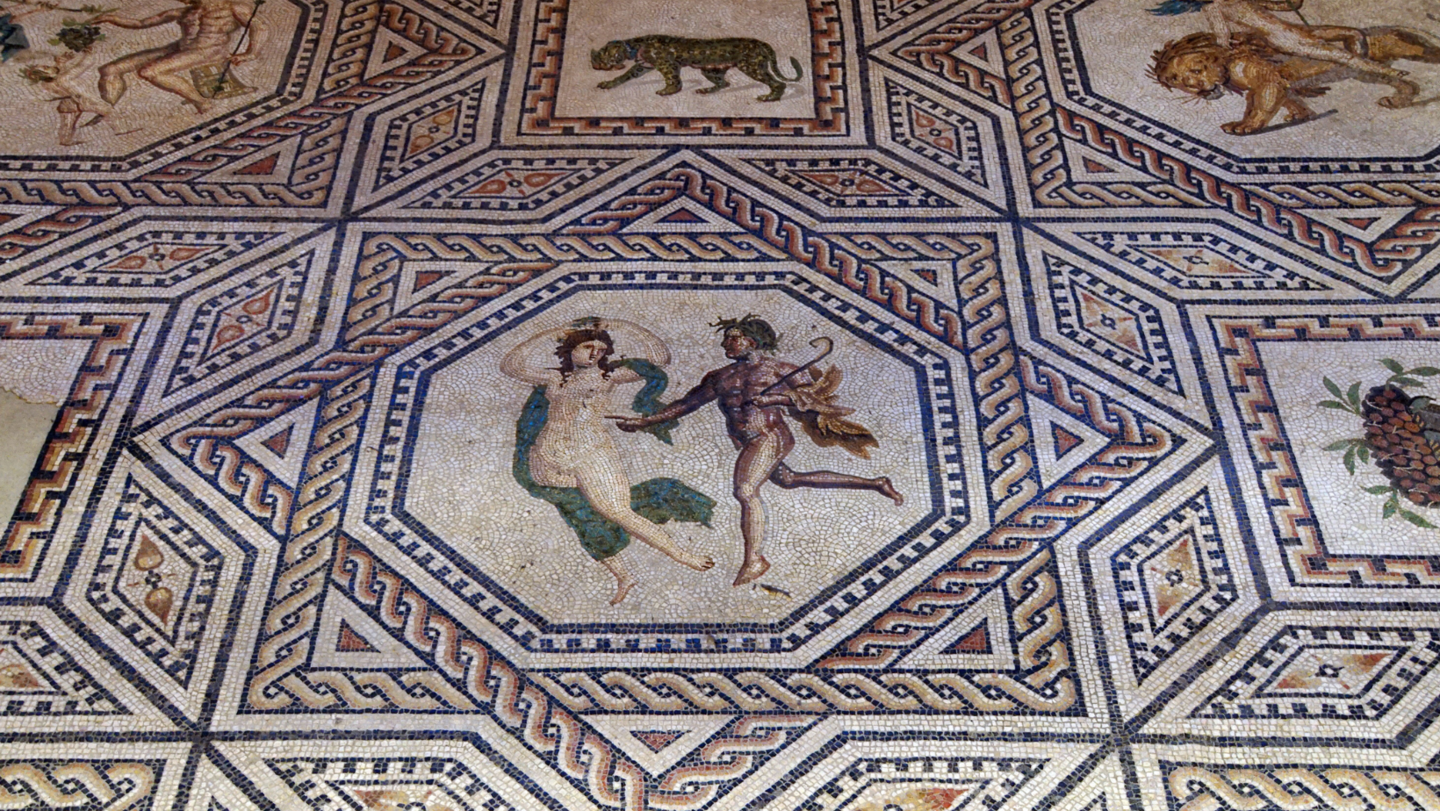
Much like Rome itself – an eternal city – its legacy lives on through its incredible art form, which continues influencing contemporary design aesthetics worldwide. One look at modern architecture reveals patterns reminiscent of geometric designs found in ancient baths and public buildings. Floor mosaics from centuries ago are now gracing the floors of today’s chicest establishments.
Preservation and restoration efforts have allowed us to appreciate fine examples like the Alexander Mosaic, a detailed depiction of a battle between Darius III and Alexander the Great that has heavily influenced modern military art. Roman-inspired motifs still find their way onto everyday items such as fashion accessories or homeware, keeping ancient Rome alive in our collective consciousness.
And Cleopatra is a testament to this influence. This isn’t just about visual arts, but it extends into literature as well. Even Shakespeare’s “Antony and Cleopatra” clearly reflects this impact.
Key Takeaway: Why did Romans use mosaics in decoration?
Not only a decorative art form, Roman mosaics left an enduring legacy. They narrated everyday life and mythological tales, serving as invaluable historical records that influenced later art forms and modern design aesthetics. Today’s graphic novels, architecture patterns, and fashion accessories all bear the mark of these ancient marvels.
Comparing Roman Mosaics with Other Ancient Art Forms
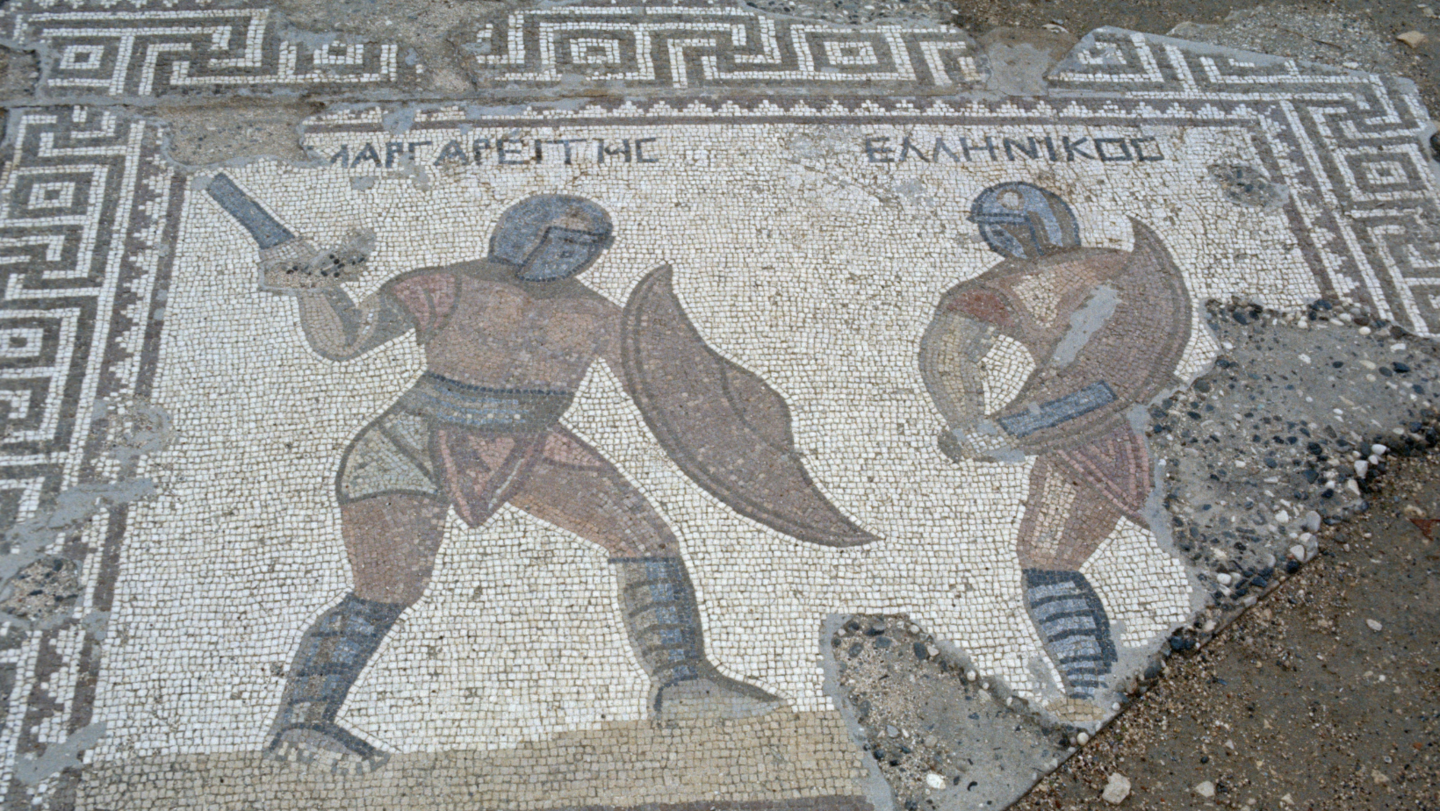
Roman mosaics are a stunning representation of ancient art. But how do they compare to other notable forms, like those seen in the Minoan civilization or Greek mosaic art? Let’s explore this fascinating history.
Roman Mosaics vs. Minoan Civilization Art
The Bronze Age society on Crete produced some fantastic works, yet it differed greatly from Rome’s mosaics tradition. The latter were primarily floor designs featuring precise geometric patterns and scenes from daily life or mythology using small pebbles called tesserae.
In contrast, the focus for the people of Minoa was frescoes – vivid wall paintings depicting naturalistic themes such as marine life and flora. These pieces give us an insight into their close relationship with nature and maritime activities but lack the intricate detail present in Roman mosaics.
Roman Mosaics vs Greek Mosaic Art
Greek mosaic art shares similarities with its Roman counterpart since Romans heavily borrowed techniques from Greeks when creating their own style around the 4th century BC onwards. Both civilizations utilized smaller pieces precisely cut to depict figures drawn from mythologies such as Hercules’ labors or Dionysus’s escapades that would decorate public buildings, including baths.
However, where Greek artisans favored simpler black tiles against white backgrounds for stark contrast (opus signinum), Romans expanded upon these methods, incorporating richer colors obtained through glass paste & marble slabs leading toward detailed mosaic panels demonstrating fine details (opus vermiculatum).
Roman Mosaics vs Original Paintings
While Roman mosaics and original paintings might seem like apples to oranges, there’s a fascinating connection. Mosaics often imitated well-known paintings of the time – for instance, the Alexander Mosaic is believed to replicate an earlier painting depicting Darius III’s defeat.
This kind of mosaic work wasn’t just a carbon copy. Rather than a straightforward reproduction, the mosaic work was more like a reimagining.
Key Takeaway: Why did Romans use mosaics in decoration?
And fascinatingly enough, Romans not only borrowed from Greek techniques but also added a splash of color. This move evolved their art beyond simple black-and-white contrasts towards creating detailed panels that are as intriguing today as they were back then.
FAQs in Relation to Why Did Romans Use Mosaics in Decoration
Why did the Romans decorate with mosaics?
Romans used mosaics to flaunt their wealth and status. They were a symbol of affluence, artistic taste, and cultural sophistication.
What was the function of the Roman mosaics?
Mosaics in Rome served multiple functions – they decorated spaces, demonstrated wealth and social standing, and told stories from daily life or mythology.
What was the purpose of mosaic art?
The purpose of mosaic art was to create lasting visual narratives that depicted scenes from everyday life, history, or mythology while adding aesthetic value to buildings.
How did ancient Romans decorate?
Ancient Romans adorned their homes with elaborate frescoes, statues, and intricate mosaics made out of small pieces called tesserae. These decorations often reflected societal values at that time.
Conclusion: Why did Romans use mosaics in decoration?
Now, you’ve embarked on a historical journey, exploring the question of why did Romans use mosaics in decoration. We have discovered how these intricate art forms were not only aesthetic marvels but significant status symbols, too.
We delved into their evolution from Greek influences to distinctively Roman styles and examined the skilled craftsmanship behind them. Techniques using diverse materials like glass paste created mosaic panels that told stories of gladiator contests, hunting scenes, and everyday Roman life.
It’s fascinating to see how ancient Rome continues to influence modern design aesthetics today through its enduring legacy. So next time you come across a detailed mosaic panel or floor design influenced by this ancient art form, remember the rich history they carry within each small piece!
From Roman art to Roman expansion, it is time to check out how the Romans impacted the Punic Wars next!

